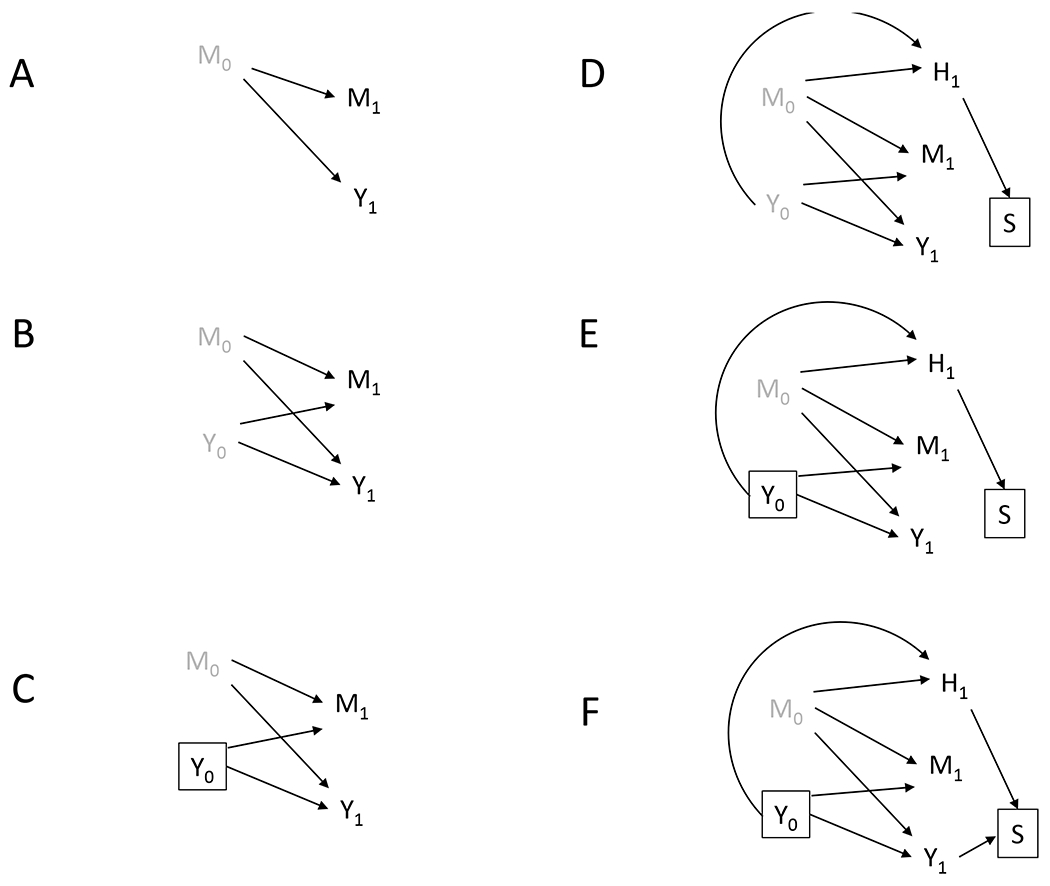Figure 3.

Directed acyclic graphs illustrating common study design issues present in cardiometabolic microbiome human subjects literature. Nodes represent variables (black=measured, grey=unmeasured) and the arrows represent causal relationships. A square around a node means the analysis is conditional on that variable in some way, whether by adjusting for it, restricting on it, or other means. Subscripts indicate time points. (A) A cross-sectional study where microbiome (M1) and disease outcome (Y1) are measured concurrenty. M1 is unlikely to affect simulatenous disease (Y1), but is meant as a proxy for previous microbiome, M0. (B) A cross-sectional study where prevalent cases are analyzed. Y1 can now be a marker for previous disease, Y0, which can affect M1. (C) A cross-sectional study where incident cases are anlyzed. Y1 is now no longer a marker for previous disease and confounding by Y0 is controlled. (D) A cross-sectional study where prevalent cases are analyzed and participants are selected (S) according to health variables (H1). Selection bias exists due to conditioning on a (descendent of a) collider, S. (E) A cross-sectional study where incident cases are analyzed and participants are selected (S) according to health variables (H1). Selection bias in (D) is alleviated because a non-collider (Y0) on the collider path present in (D) is controlled. (F) A case control study where incident cases are analyzed and participants are selected (S) according to health variables (H1). Selection bias exists due to conditioning on a collider, S.
